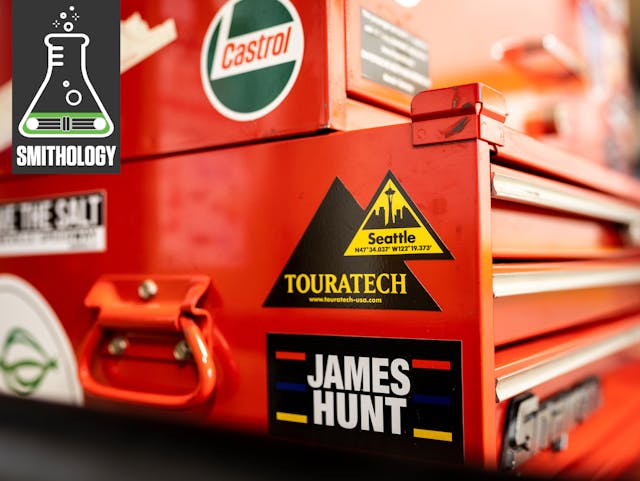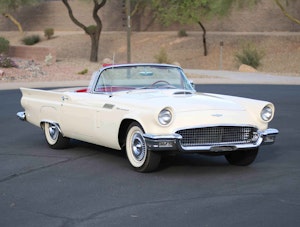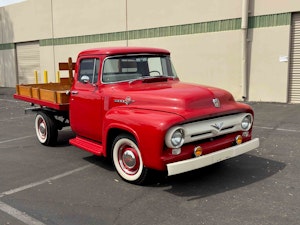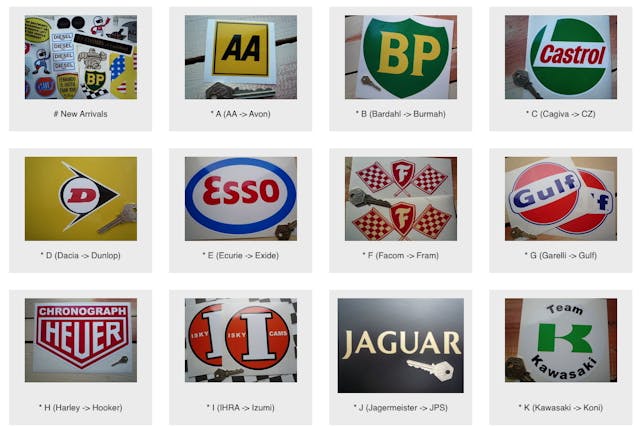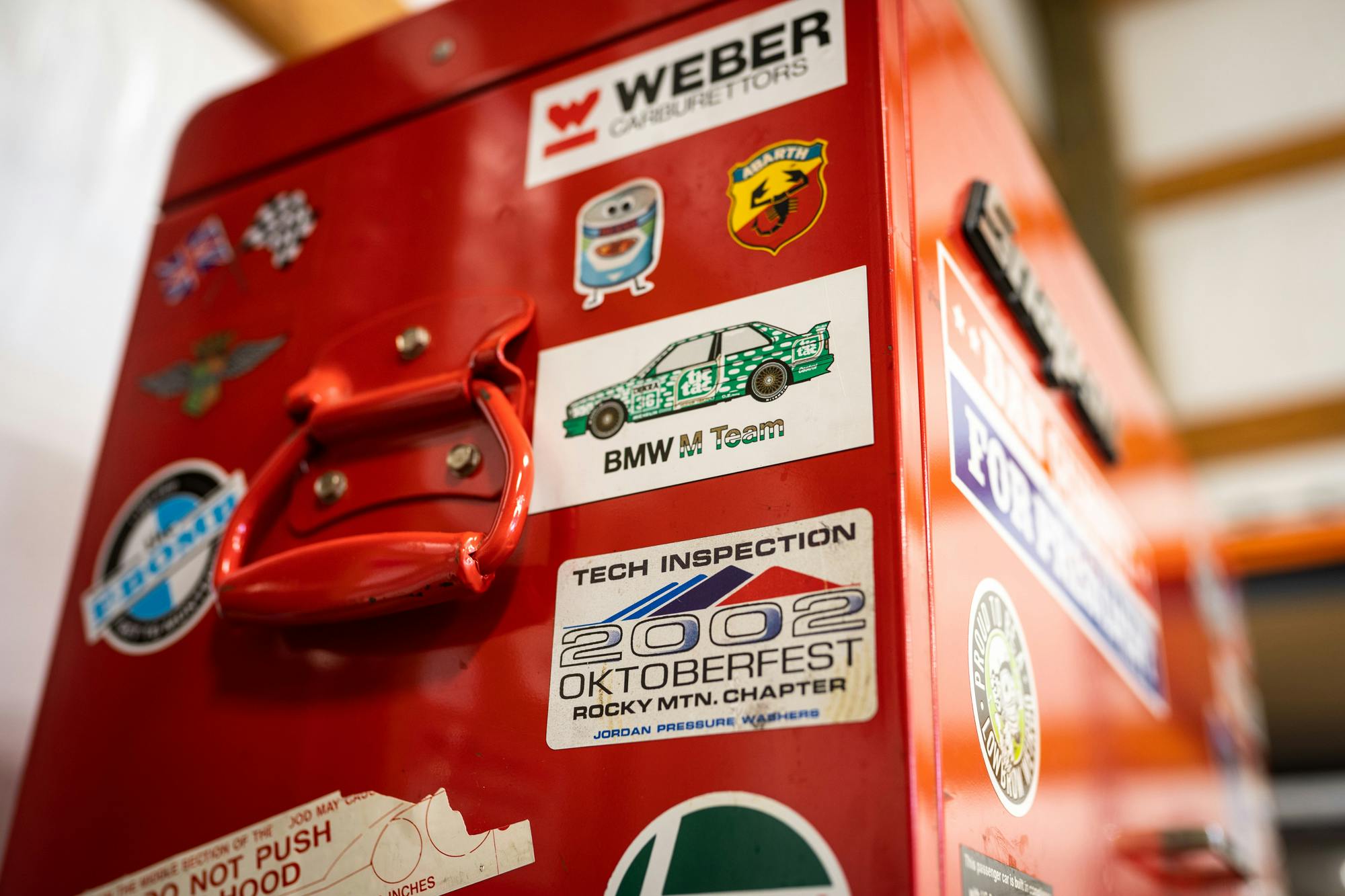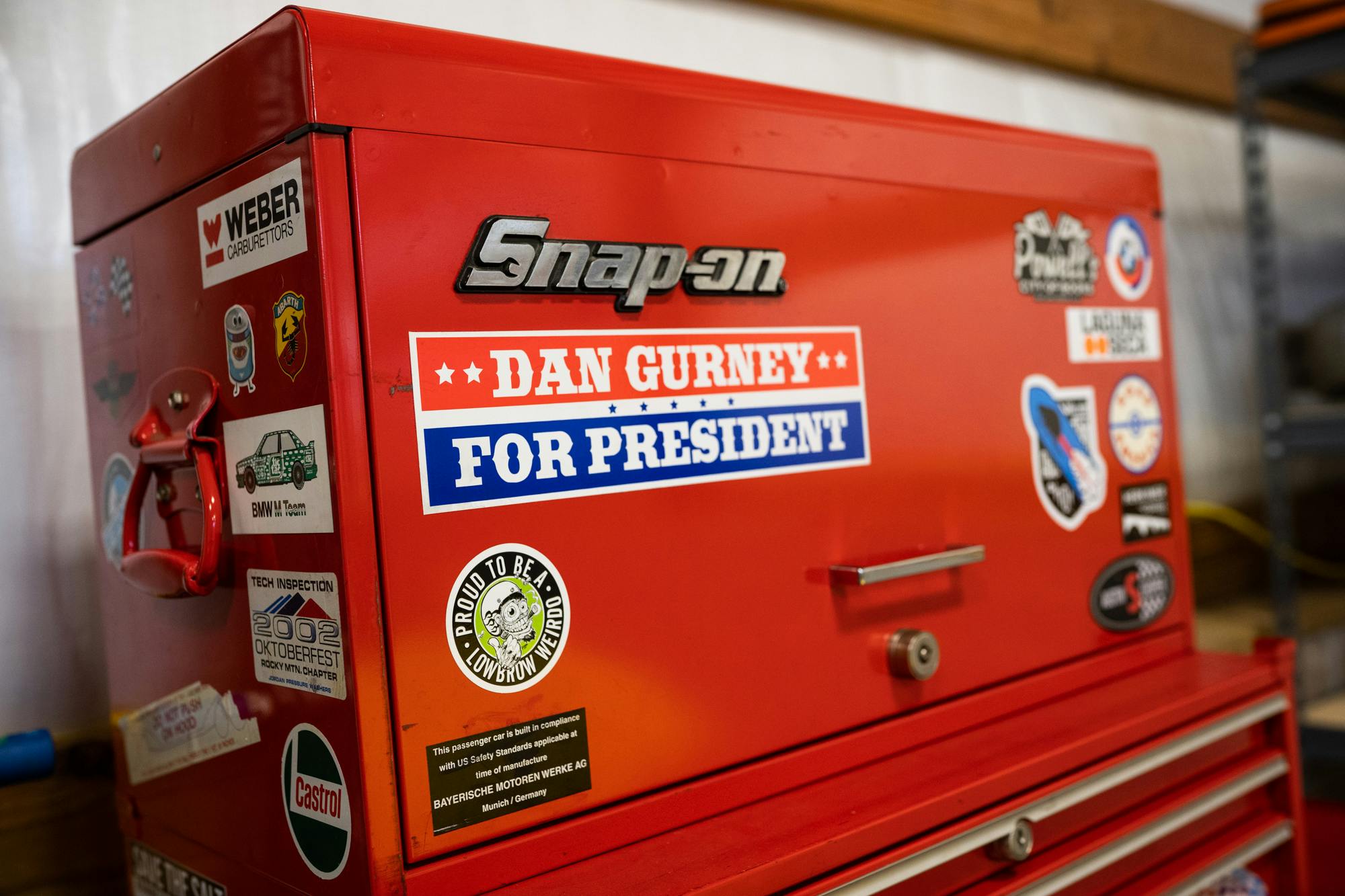Media | Articles
Smithology: No dead witch required
A doctor told me, once: Obsession can be dangerous.
Maybe it wasn’t so much dangerous. Maybe the word that particular psychologist used was “unhealthy,” which is why I have not been back to a psychologist since, not once, since I was informed, in my early twenties, that it would probably be healthy to leave the house a little more and perhaps focus on something other than cars and maybe also the occasional motorbike.
To which I said a single word: Ha.
She took it as a joke, this doctor. We met no further for a number of reasons. Which is good, because we didn’t even get to my problem with The Stickers.
I was in remission, really. Until a series of events kicked off four weeks ago, in Baltimore, where I purchased a 1972 BMW 2002tii for $1800. A deeply rusty car, but running, with odd charm. The BMW seemed good only for parts, but then I decided to save it, which is how we get to my friend Ben.
Marketplace
Buy and sell classics with confidence

Ben lives in Chicago and works on BMWs for a living. We have been friends for almost 20 years. Ben is better at wrenching than most people are at eating or sleeping or not wrenching. Naturally, when he heard that I had bought a pile of German oxide in the general shape of a car, he wanted to see it. I sent pictures. Pictures turned into phone conversations, and phone conversations turned into asinine ideas, and then I heard my voice saying, Oh Hell, What if I Just Brought It to Chicago and We Went Nuts on the Thing With Some Tools?
Naturally, Ben was fine with this, because Ben is like most German-car mechanics—attracted to any fun that even remotely resembles pain and suffering. On top of this, he likes 2002s and owns a fleet of the suckers, in various states of cost and scruff, because how can you not?
Then Paul Wegweiser showed up.
Paul lives in Pittsburgh. Twenty years ago, he was my BMW parts guy, working for a Baltimore company called Maximillian Importing. I would call Paul when I needed wheel bearings or trim bits or that rare whatevernik bushing made only by some Bavarian elf in East Upper Beersteinberg, and a short time later, said part would arrive on my doorstep. Paul adores old BMWs in the way that most people adore breathing. He, too, is a good wrench, and friends with Ben. Two guys with good taste.
Which brings us back to The Stickers.
Paul has a thing for beat-up old German crapcans dragged from barns. He finds nonrunning, sub-ugly pile-cars and revives them mechanically, then road-trips to far-off places like California, cosmetics unrestored. Last weekend, when I towed my new 2002 to Chicago, to begin wrenching with Ben, Paul drove in to help. He arrived in a gray 1969 2002 with a host of lightly obscure and vaguely punk-rocky stickers on the rear bumper. Intrigued, I made obnoxious noises at said bumper, gesturing like an idiot.
“I say ding dong dot com,” Paul said.
“Huh?” I said.
“I say ding dong dot com,” Paul said.
It occurred to me that I may have smoked too much pot in college.
“That’s where you get the good stickers,” Paul said.
“Ohhhhhhhh.”
Thirty seconds later, I opened a browser on my phone and nearly plotzed.
Collecting anything in the age of the internet takes little effort. Money plus time plus Google equals shipped package. Long before Google existed, however, I began gathering stickers. Car stickers, van stickers, motorcycle stickers, free stickers, cheap stickers, moderately expensive stickers, band stickers, instrument stickers, tire stickers, book stickers, bookstore stickers, national-park stickers, state-park stickers, and, last but not least, car stickers.
Okay, mostly car stickers.
I dove in. First on my phone, then, an hour later, on a laptop. Turns out the address is actually ISayDingDong.co.uk, the United Kingdom suffix. Turns out also that some loopy Brits run a website containing nearly every sticker I have ever wanted but could not find. In years of lazy collecting, I had somehow remained blissfully unaware of this firm’s existence. The site has a small page noting that the company can also make any trademark-free logos or signage on request, if you ask nicely and send a vector file.
Your local sign shop will likely perform this same feat, but they will likely not be versed in the necessary evils of UV protection on a vehicle and the critical difference between, say, the early postwar Marchal logo and the late one. Similarly, they will probably not offer stickers containing those logos readily printed in so many sizes that you, again, nearly plotz.
My fingers trembled as I clicked.
The first order was more than £600. I didn’t spend that, mind you, didn’t actually place the order, just built a shopping cart that deep. Largely without trying, just poking around in a daze. Half of that list was old-school British car-dealer logos, those rectangular jobs that announce where an English person has bought a car. Did you know, for example, that 1988 British Touring Car champion and YouTube rally legend Frank Sytner was the first U.K. dealer to sell the Alpina brand? I did not. Did you know that the DingDong folks offer a neat little repro of his dealer’s 1980s ID decal? Who doesn’t need that sort of thing? What if I run into Frank on the interstate one day and need to wordlessly demonstrate how much I appreciate his work? Where will I be then?
Into the cart.
The rabbit hole deepened: Old BMC comp-department logos. (Owned a 1950s MG once. Into the cart.) The Malcolm Smith Products badge. (Met that hero once, for an interview on desert racing. Into the cart.) The Halibrand wheel logo, this neat little black circular guy, in reverse cling vinyl, easily hung behind glass. (I own an American vehicle. Into the cart.) The Bud Moore Engineering name on a traditional 12-inch bumper sticker. (Trans-Am Fords!) The ERA logo, because Raymond Mays was rad. (Rad!) Three ACO stickers—the 1950s version, then the 1960s/1970s one, then the modern one—because while the French are jerks about much, they gave us Le Mans, and who hates Le Mans? (Frog logo frog logo frog logo!)
The Marchal-headlights cat. Old BMW “gunsight” roundels in black and white, as used on the M1. Number boards from 1970s touring cars. And and and. Stuff I hadn’t seen in years next to stuff I had never seen.
The why of all this may seem unreachable. It’s simple: You buy a sticker, you gain a piece of the rock. On your toolbox or trunklid or toaster, adhesive-backed names you love, a reminder that, although you may not be wealthy enough to own the sheet metal or the history, you can have a chunk of the idea. The idea belongs to us all.
Where will you stick them? Doesn’t matter. The sticking is immaterial. They will go somewhere, someday, you tell yourself. And for now, you are prepared. Ready. You own 30 McLaren kiwi-bird silhouettes in sun-fast vinyl of varying colors—who can stop you?
It took an hour last night, sitting on the couch in our living room with a glass of bourbon, but I eventually pared down my order to £37. Roughly $50 American. Even in the face of addiction, everyone has limits. Because I am an even-tempered individual, the paring was a fine combination of Well, really, I don’t need a Hesketh Racing bumper sticker, I already have the Hesketh bear on my toolbox, and YES SURE FINE I GUESS WE DO NOT NEED FOUR DIFFERENT VERSIONS OF THE MATRA LOGO IN BOTH STICKY-FRONT AND TRADITIONAL REAR ADHESIVE HARRUMPH OKAY SURE BUT I SWEAR TO YOU THIS IS THE FINAL STRAW.
Each loss, like cutting off a finger. So much left behind.
My wife walked into the room as I was wrapping the order. Saw me hunched over the screen, squinting. Asked what I was doing. Cheap stickers, I said.
“Cheap?”
“Yeah, like £1.99.”
Not an untruth. One of those stickers cost two pounds. I think I bought three of them. Seemed like a bargain. Good place to stop. You can only go so far in a single day.
Which is why I went back this morning and bought another ten.
